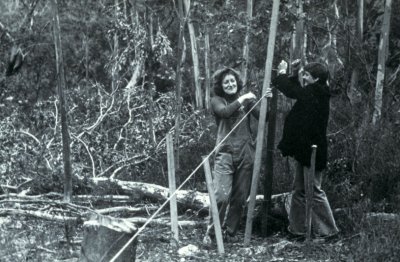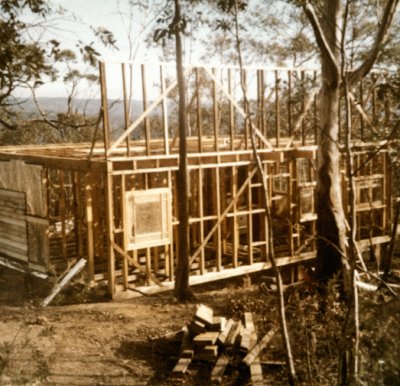Cover page Preface Introduction Context Feminism Feminist Research Housing and Feminism Self Build Housing Method Sample Process Analysis Case Studies Marion Pam May Carol Jan K Tashe Findings Personal Background Community Training and Technical Land Policies Institutional Support Shelter and Service Planning and Design Building Materials Conclusions Summary Recommendations Research
|
Carol
Home purchase was definitely not an option for Carol as she had no credit rating and no savings. Carol desired the security of tenure that rented accommodation does not afford and a realisation that by building you don't need to mortgage your life away to have your own house. Self build was a cheap option, it gave Carol and Annie each a 50% equity in the house. Carol says that although in the first of the first two years of building most of her spare cash went into the house, she actually 'saved' money because her social life was building. Annie and Carol had talked about buying land and building a house for about six months prior to the land being gifted to them. Carol and A decided to build as soon as the land was available. This was December 1975, and construction started on February 1st 1976. Carol described the months and years, of construction like this,
1976
1977
Carol said she and Annie put in ten or eleven hour days during school breaks. Carol described her average working day during spring and summer, in the time before ozone warnings, in the following way.
Carol found working full time was definitely a hindrance, it seemed such a slow slog sometimes. "Everything takes longer than you think." The whole process took "heaps and heaps" longer than either of them envisaged.
Carol said she was able to move in 18 months after she began clearing the site. The house was by no means finished at this stage, but livable. Another 18 months after that and probably 20 years later there are still things that could be done.
|


